FREE GUIDE
Personalization Technology: Landscape & Trends for 2023
How to choose the right personalization tool and what trends are shaping the personalization technology landscape? Find answers to this and more in our free guide.
Published: Jul 7, 2022
Introduction
89% of businesses are investing in personalization as a critical strategy for their current and future success. However, personalization goes far beyond adding a first name field into the subject line of an email…
In order to stay relevant in today’s hypercompetitive marketplace, brands need to remain customer-centric and drive their attention to personalized experiences for website visitors. After all, customers now hold the power and personalization is top-of-mind for modern consumers. Not convinced? Here’s a fraction of the stats showing the power and importance of customer personalization:
80% of consumers are more likely to purchase from a brand that provides personalized experiences.
63% of consumers will stop buying from brands that use poor personalization tactics.
Personalized shopping cart recommendations influenced 92% of shoppers online to buy products.
forbes.com
But none of what we’re saying is that new or revolutionary. Personalization has been a trend for over a decade now, and it has evolved greatly from templatized marketing communications to dynamic, predictive, and even proactive experiences.
Today, a plethora of personalization software tools, including AI and machine learning algorithms, allow us to achieve 1:1 personalization like never before. In order to take full advantage of personalization technology, we must first understand what it is and how it benefits both brands and consumers.
To answer these questions and more, we’ll take a closer look at:
1. Personalization technology definition
2. The 5 benefits of personalization technology
3. How to choose personalization technology
3.1 Personalization maturity curve
3.2 Personalization engine features
4. Personalization technology trends
What is personalization technology?
Before we take a deep dive into personalization technology, let’s start with the basics: What is personalization? In eCommerce, personalization is the process of creating individualized shopping experiences and interactions. These can range from dynamic website content to unique promotional offers to tailored product recommendations, etc.
As such, personalization technology encompasses the variety of software tools that collect, store, and manage customer data in order to orchestrate individualized experiences.
Depending on the size of your business and your place on the personalization maturity curve, your personalization technology stack can consist of a single or a set of personalization tools. If you have the budget to afford something like Adobe’s Experience Cloud, you might not have to worry about much else.
However, even established businesses often choose to go with several providers that are experts in their chosen niche: Product recommendation engine; Dynamic pricing software; Intelligent site search; Conversational commerce bots… Based on a recent ITSMA survey, this is the typical personalization marketer’s toolbox:
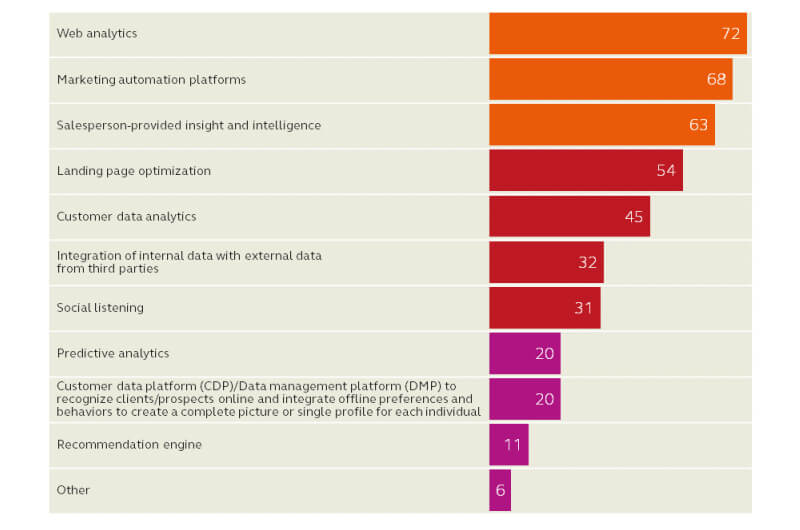
It’s important to note that the orchestration part should be done by a personalization engine that is able to ingest all that third-party data and ‘spit out’ relevant communications in real-time.
For example, at Yieldify, we integrate with your CRMs, CDPs, email service providers, analytics platforms, review software, and more to make sure the campaigns we build target the right person, at the right time, with the right offer.
The benefits of personalization technology
We’ve touched on what personalization technology is, so let’s discuss the five key benefits that personalization engines can offer to eCommerce marketers, whether through self-service, fully-managed, or in-house solutions.
Better customer experience
With the advance of technology, the customer journey has become more granular. As a 2019 survey claims, consumers are frustrated when they are offered generic, irrelevant content, and more than half expect digital personalization as a standard service. Dynamic content and personalized product recommendations help with building trust, make your brand feel more authentic, and keep your customers more engaged.
Case in point: StudentUniverse, one of the world’s leading travel booking sites for students and young adults, identified that website visitors had a frustrating experience using the site search bar. By implementing Yieldify’s personalization solution, StudentUniverse was able to counteract browse abandonment and achieved a 16.76% conversion rate uplift on mobile and +4.51% on desktop.
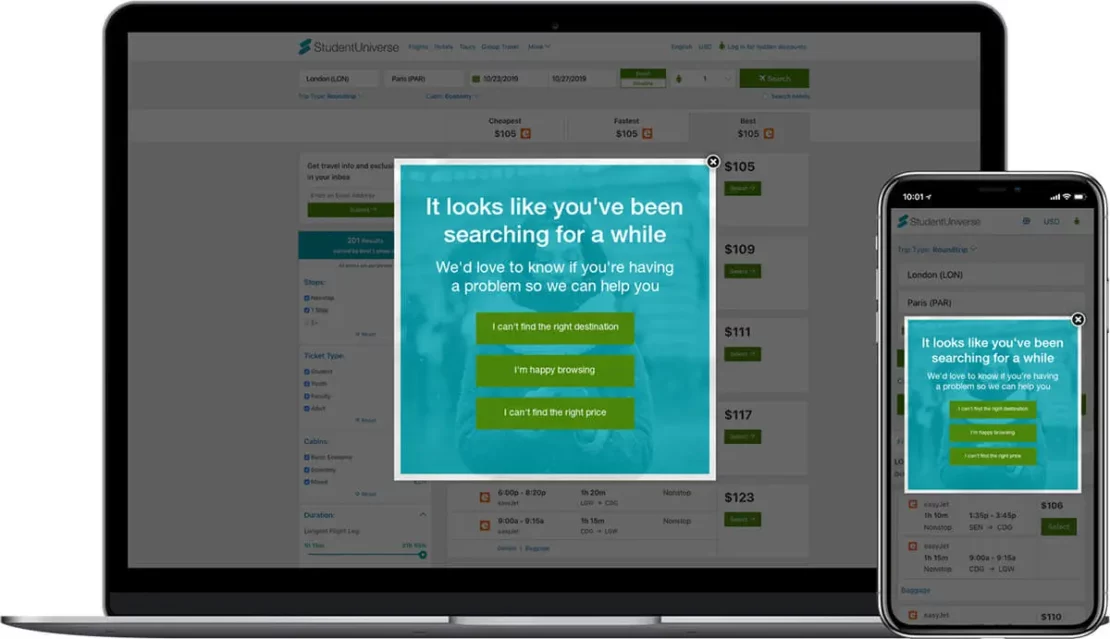
Higher conversion rates
While many elements impact your conversion rates, the experience you offer to your customers is a vital one. By getting the right message to the right person at the right time, your sales can skyrocket. According to a Monetate report, the more personalized pages a customer sees, the higher the conversion rates. On average, once companies implement personalization, they see a 20% increase in sales.
Case in point: TravelUp offers flights, package holidays, hotels, and more. Every step of the customer journey is crucial in the travel industry, and the company wanted to increase bookings by showcasing added value with their “Fly Now, Pay Later” payment scheme. Using Yieldify’s personalization technology, TravelUp achieved a 5.24% uplift in conversions.
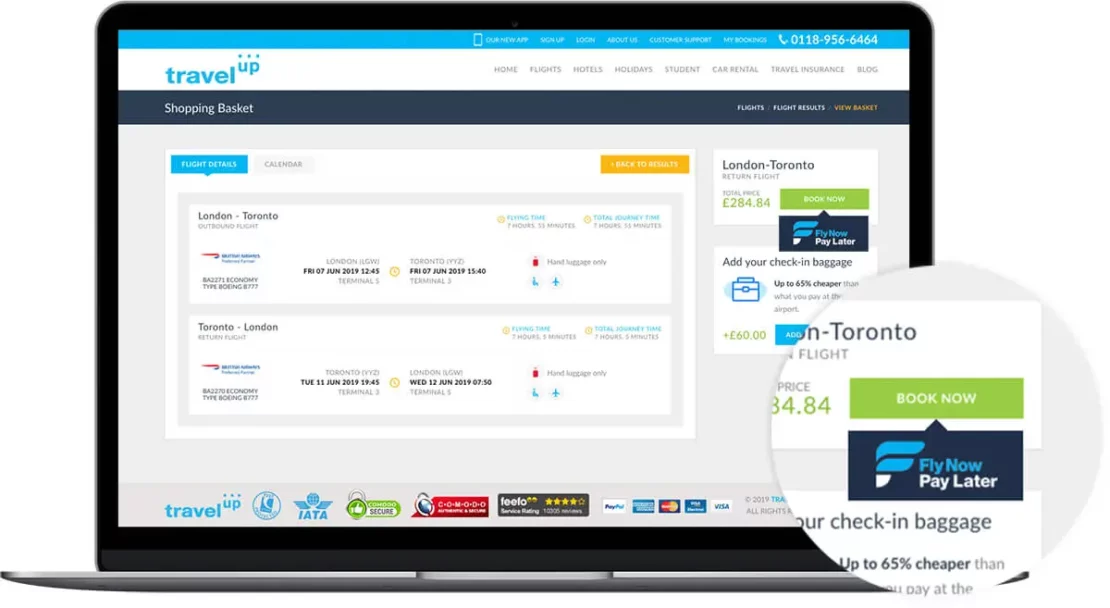
Reduced cart abandonment
A staggering 80% of users abandon their carts. Reducing this by even a few percentage points will result in a significant revenue jump. By analyzing every aspect of the customer journey, companies can incorporate real-time dynamic pop-ups, browser retargeting, email remarketing, and other strategies. The result is reduced cart abandonment rates, increased customer retention, and a great customer experience.
Case in point: Domino’s, a leader in the food industry and online delivery, wanted to re-engage users who were about to abandon their cart. With Yieldify’s, they implemented dynamic messaging that encouraged users to convert with an even higher AOV. Domino’s cart abandonment campaign resulted in 14% higher conversion rates and 9% higher AOV.
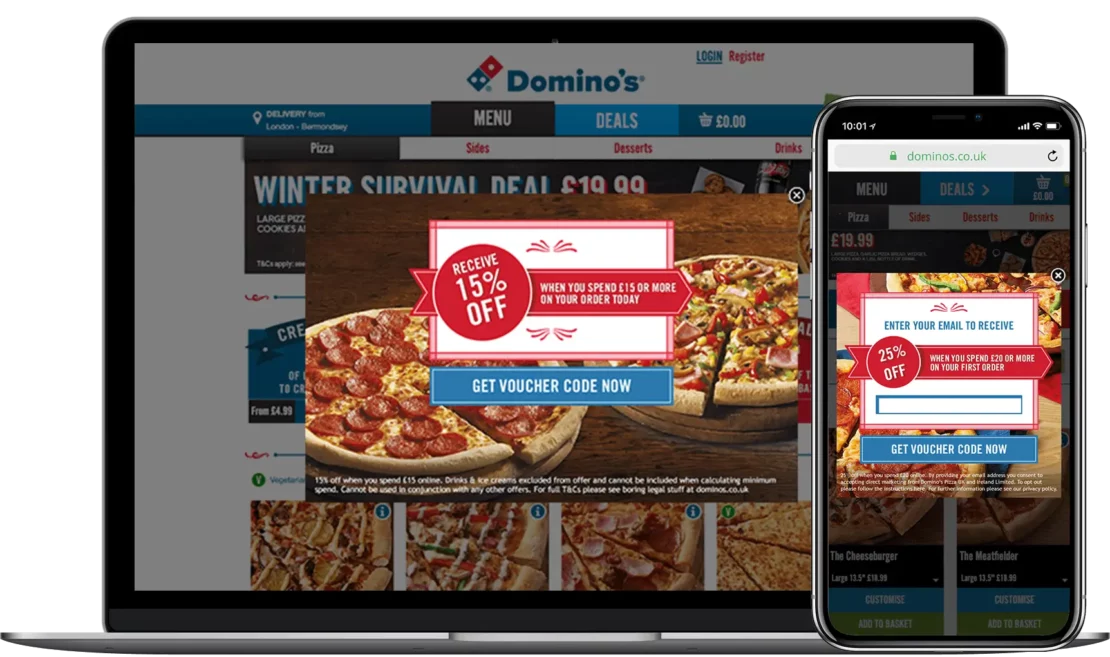
Increased average order value (AOV)
A Salesforce’s report states that 69% of buyers expect Amazon-like buying experiences: Things like personalized product recommendations, cross-sells, and upsells. Personalization technology leverages what you already know about your customers in real-time and offers them relevant information that improves the customer journey and supports your business goals.
Case in point: Healthy Chef is the go-to source for healthy recipes and wholefood products for Australians. The website receives high volumes of traffic but noticed conversions were dwindling. Together with Yieldify, Healthy Chef deployed a number of campaigns, from list building to social proof, and achieved a 6.2% uplift in AOV.
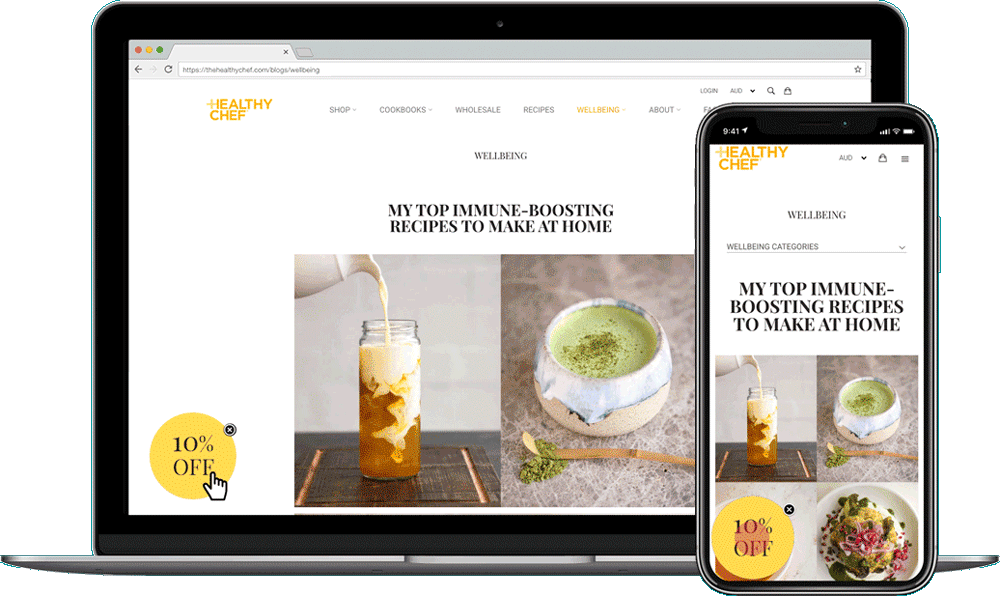
Improved customer loyalty
Loyal customers are the holy grail of long-term, sustainable business success. Adobe’s report states that US eCommerce stores make 40% in sales from 8% of loyal users. Providing a tailor-made, outstanding experience to your customers makes them feel valued as individuals. Build brand loyalty and stand out in the noisy digital world by implementing data-driven personalization strategies.
Case in point: To drive customer retention and loyalty, brands are turning to loyalty programs. For instance, up-and-coming beauty brand Skyn ICELAND utilized personalization technology to improve the customer journey for their loyal customers. By tailoring their messaging and placements, Skyn ICELAND achieved a 23.1% uplift in conversion rate and boosted AOV by 14.94%.
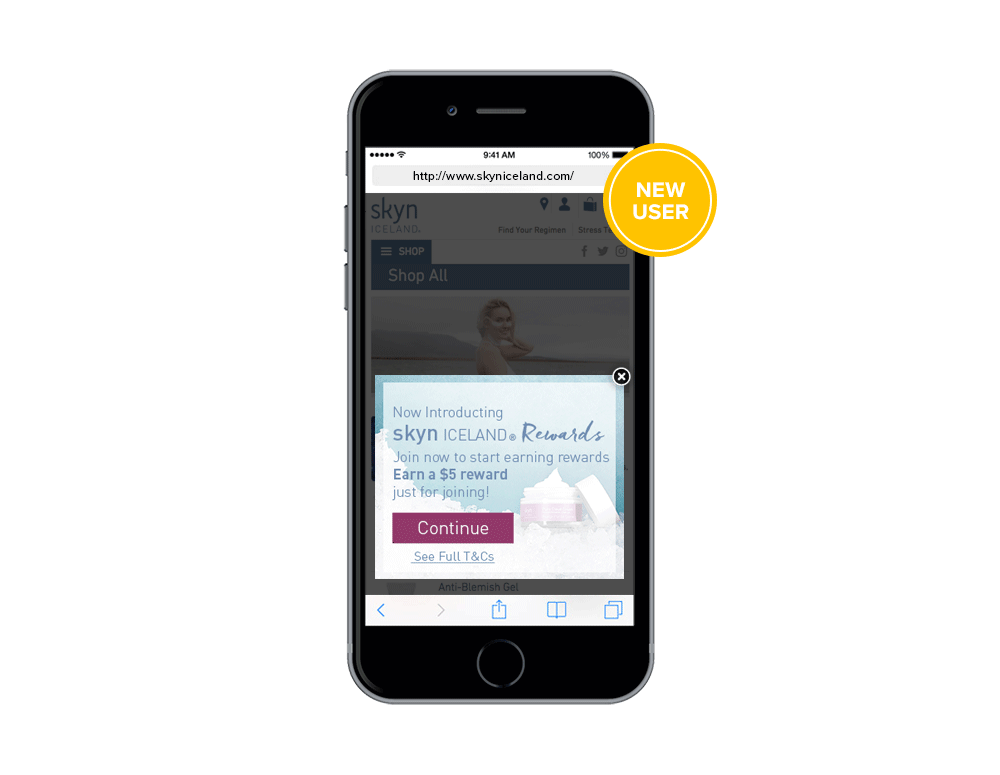
How to choose personalization technology
Personalization maturity curve
Choosing a personalization technology ultimately depends on the sophistication level one is seeking. We’ve already referenced the personalization maturity curve, so let’s explore it in a bit more detail to understand how it informs our software buying decisions.
The personalization maturity curve signifies the different phases, tactics, and expected returns of a personalization strategy. As you can see, on the most basic level we have personalization based on field insertion. In other words, your typical “F_NAME” scenario.
As you advance up the maturity curve, you encounter more complex personalization strategies: Things like personalized product recommendations, dynamic content, social proof, and more will sit at rules-based personalization or higher. These strategies tend to have the most significant impact on revenue and customer retention and thus require more sophisticated personalization solutions.
Take a look at the image below and try to identify which stage your eCommerce personalization strategy is currently at. Most businesses sit at the first three stages, i.e. Mass-marketing; Field insertion; or Rules-based segmentation. The personalization maturity curve is also handy in predicting the effectiveness of your personalization campaigns as you move up the ladder. I mean, who doesn’t want a 20-50% lift in conversions?!
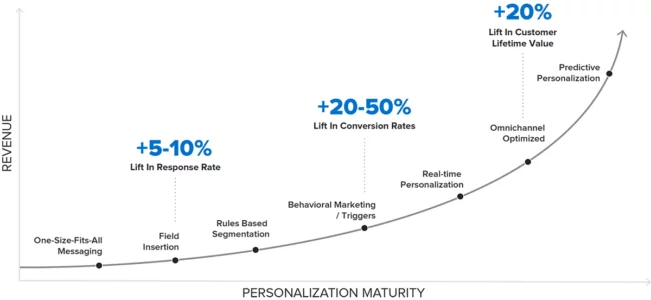
7 must-have personalization technology features
Now, when it comes to choosing a personalization solution, there are several ways you can go (read our blog post on personalization tools to learn more). In a nutshell, you can choose self-service software, such as Google Optimize. You can choose an agency. Or, you can choose a managed solution like Yieldify that gives you access to both, the technology and the human resources including account managers, designers, technical engineers, etc.
Whatever you decide to go with, you’ll need to make sure your chosen personalization provider can guarantee the following features:
- Customer data capture
- Customer segmentation
- Real-time optimization
- Rules-based and/or predictive personalization
- Testing algorithms
- Multiple channels
- Seamless integration with eCommerce technology stack
1. Can it capture or ingest customer data?
Remember, without customer data no personalization is possible. Personalization tools rely on data to best understand your customers and prove them with the most relevant experience on your site. The first-party data you use for eCommerce personalization can be implicit or explicit:
- Implicit data is the information that was not provided by the user but gathered from available data streams. For example, their digital fingerprint (geolocation, device, browser) and digital body language (number of sessions, specific pageviews, time on site, etc.). Think how Amazon suggests related products based on your basket contents.
- Explicit data is the information that was intentionally provided by the visitor through form submission, poll, survey, filtering options, input fields, and so on. Think how travel booking engines ask you to submit a destination first to tailor the results.
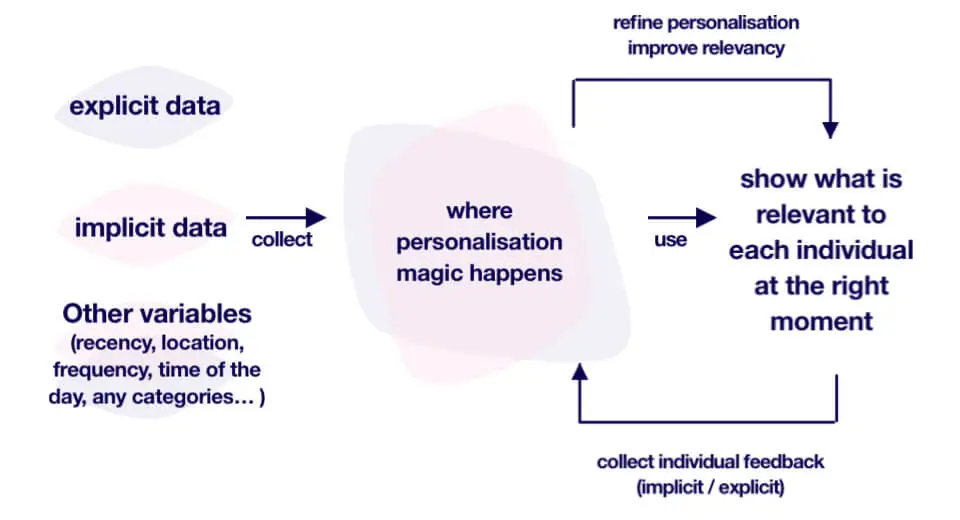
Apart from collecting first-party data from your website activity, social media, advertising channels, CRM, customer surveys, and elsewhere, your personalization technology should be able to ingest second- and third-party data from CDPs and DMPs. This data will allow you to reach new audiences, predict behaviors, improve precision targeting, and build stronger relationships.
2. Can it leverage that data to create customer segments?
Understanding your visitors is the first step towards personalized customer journeys, and one way to do that is through segmentation. There are a number of ways to segment your target market (click on the links below to explore each topic in more detail).
- Demographic segmentation
- Geographic segmentation
- Behavioral segmentation
- Psychographic
- Technographic
- Firmographic
Your best bet is to use these segmentation methods in unison to achieve hyper-relevancy. If you were to split only based on gender (demographic segmentation), you might miss personalization opportunities when shoppers deviate from their assigned segment – for example, a man shopping for a gift for his wife. However, if you combined demographic and behavioral segmentation, you could actually identify such behavior and show relevant messaging in real-time.
Audience segmentation also helps with setting priorities. You’ll be able to answer key questions like Which visitor segment drives the most traffic? How does segment X compare in conversions to segment Y? Which segment drives the most revenue? Having answers to those types of questions will prove invaluable when it comes to optimizing your digital strategy and conversions. You can learn more about this by reading our guide to STP marketing.
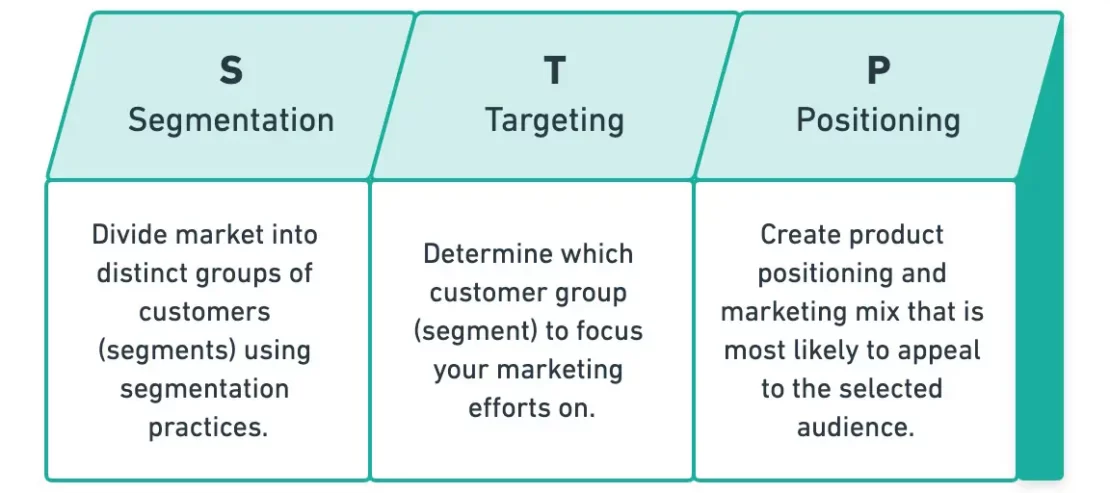
3. Can it optimize based on real-time behavior?
We can wax poetic about behavioral segmentation, but it all comes to your personalization technology being able to target and trigger based on real-time behavior.
As mentioned in the example above, you could have all the data pointing to your customer being an X located in Y and interested in Z. However, the moment that customer deviates from their pre-assigned segment, your personalization efforts go to waste and might even cause backlash.
Optimizing based on real-time behavior can help you avoid personalization faux pas, {insert any Marketoonist cartoon}, increase engagement, improve the on-site experience, and ultimately have a positive impact on your bottom line.
4. Does it support rules-based and/or predictive personalization?
Rules-based personalization allows marketers to manually set rules upon which a personalization engine then executes. Think of it as an IF THIS/THEN THAT approach.
For example, IF a visitor is a member of your loyalty or rewards program, THEN provide a message welcoming them back to your website. IF a visitor is new to your website, THEN trigger an email sign up form to capture their email address.
On the other hand, predictive personalization is a tad smarter in that it predicts actions based on the user’s previous behavior. Personalized product recommendations and cross-selling are just some examples of predictive personalization in action. More advanced capabilities include tracking customer sentiment and interfering before they had a chance to churn, like the Sprint case below:
“Predictive analytics have transformed how Sprint interacts with customers and dramatically improved the customer experience.
The company uses an AI-powered algorithm to identify the customers at risk of churn and proactively provide personalized retention offers. AI predicts what customers want and gives them the offer when they are most at risk of leaving the company.”
forbes.com
5. Does it offer testing algorithms?
A golden marketing rule states: You cannot improve what you don’t measure. That’s why testing algorithms are crucial to any personalization technology.
Most personalization engines offer some sort of A/B testing and multivariate testing functionality. At Yieldify, we like to provide our clients with more actionable insights and focus on incrementality testing. With incrementality tests, you can essentially measure the effectiveness of your personalization campaigns in money’s worth.
We set up the campaign with test and control groups, run it until it achieves statistical significance, and show you the results based on the influenced sales. Once you have established confidence in a campaign, you can then run some A/B tests to tweak simple things like copy or creative.
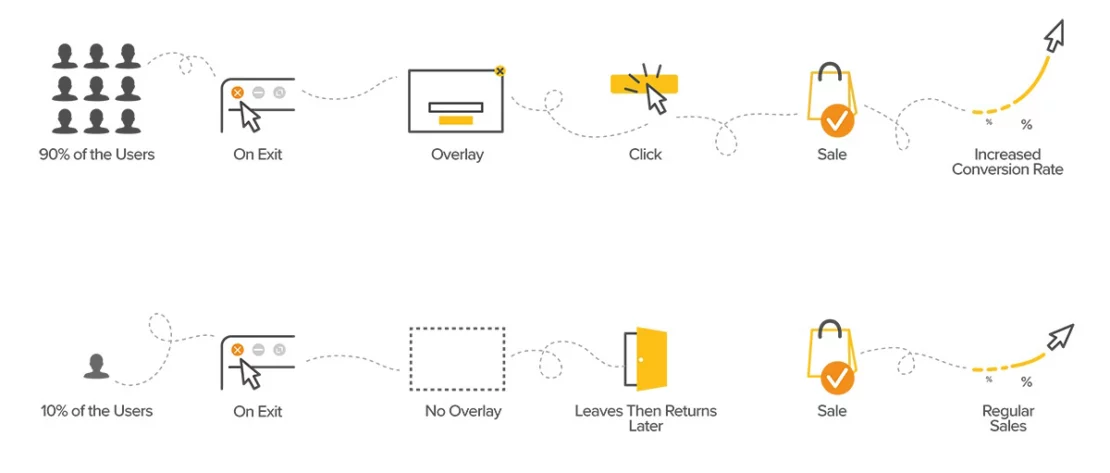
6. Which channels does it facilitate?
Personalization can occur in many different outlets; however, depending on the personalization software you choose, you will have access to fewer or more options. Some of the most popular personalization channels include Website, Mobile, Email, Browser, and Apps.
Before choosing a personalization engine, you will need to determine your overall marketing strategy and goals and decide which platforms or mediums you wish to pursue. Channels like website and email are kind of set in stone and shouldn’t be ignored. Based on our Personalization after COVID-19 report, here are other popular personalization channels:
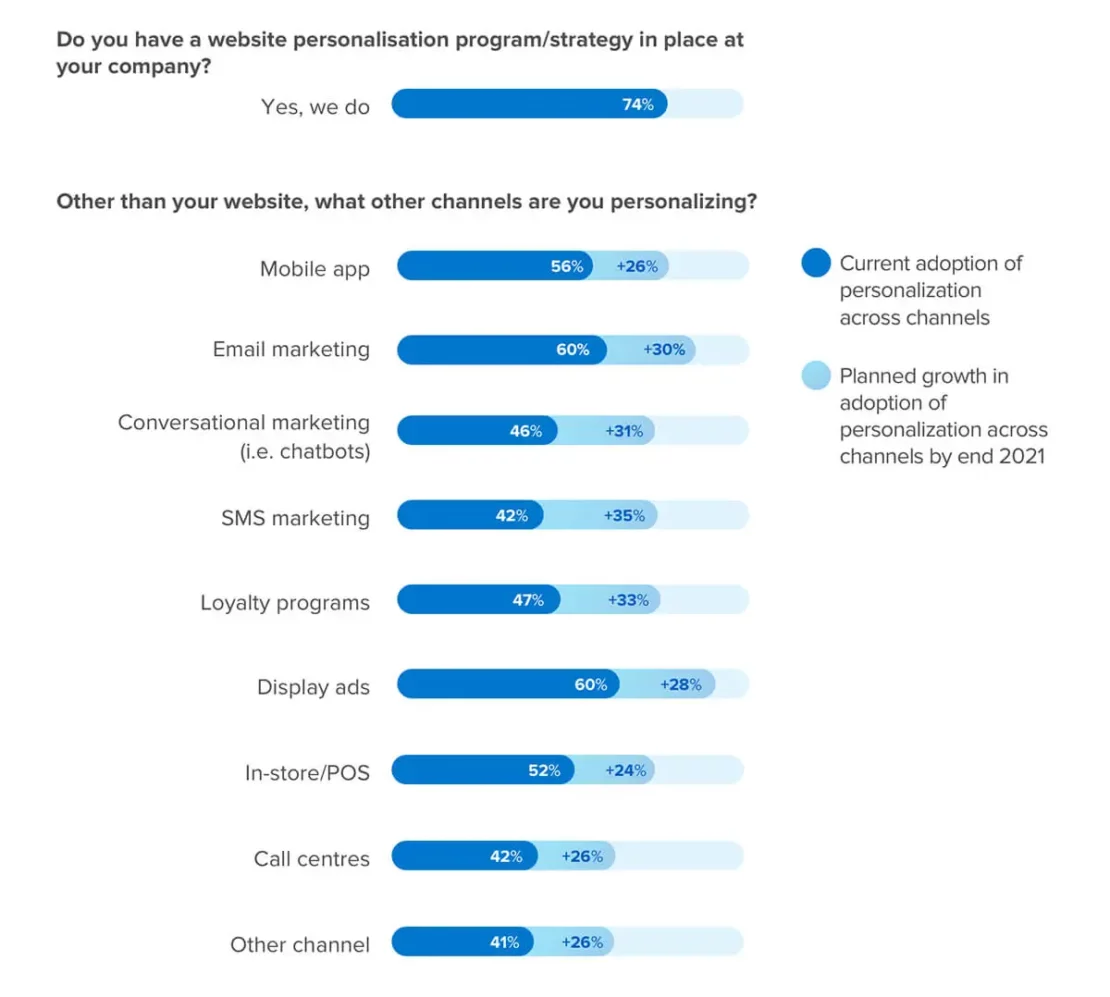
7. Does it integrate seamlessly with your eCommerce stack?
As mentioned, personalization technology can encompass a number of different personalization tools, but it also has to integrate flawlessly with your general eCommerce marketing stack. Ideally, everything should come together to enhance – not impede – the digital customer experience.
Here are marketing stack examples from London-based eCommerce beauty retailer Space NK. You can see more beautifully illustrated marketing technology stacks and get inspiration for yours over at ChiefMarTec’s Stackie Awards.
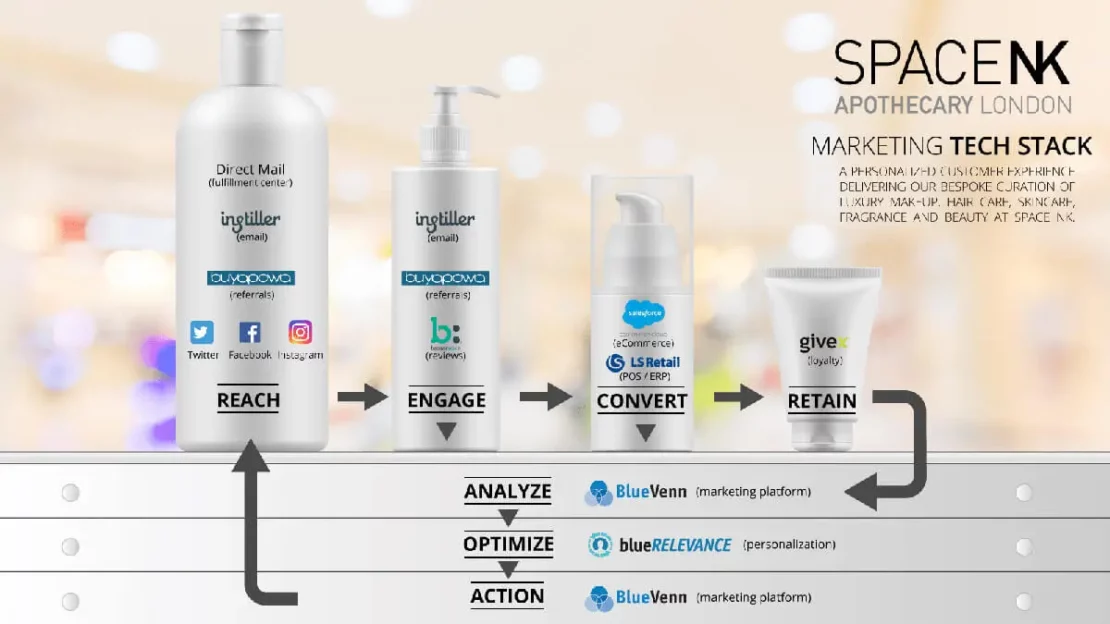
Let’s take a quick look at some of the typical eCommerce marketing stack categories, and see how it can work together with your personalization technology to achieve a common goal:
Analytics and tracking. Whether you’re a marketing novice or an established veteran, you know that setting up analytics is essential to tracking eCommerce sales and marketing performance. Your personalization engine needs that data to uncover opportunities for personalization, track performance, and more.
Relationship management. The most integral piece to the foundational eCommerce marketing stack is a customer relationship management software or a CRM. This is where all your customer data is stored, and potentially segmented. Integrating your personalization tech with a CRM is what enables you to deliver highly personalized marketing campaigns at scale.
Email service provider (ESP). Email marketing is a vital part of eCommerce strategy not only in its ability to nurture warm leads, keep existing customers informed, but also reactivate lost revenue via cart abandonment emails. Because personalization happens on both of these channels, it’s imperative they talk to one another and exchange valuable information, like cart value, items in cart, product/category affinity, coupon redemption, etc.
Social media and advertising channels. Platforms like Google Ads, Facebook, Instagram, and Pinterest are often utilized by eCommerce sellers to drive qualified traffic to their online stores and increase conversions. By adding personalization technology into the equation, you’ll be able to personalize based on the referral source.
Customer review platforms. You know how they say that cash is king and reputation is queen. Well, in eCommerce, webutation is queen. While that’s just a witty acronym for website reputation, it is a powerful tool in building trust with your customers and increasing conversions. In fact, over 50% of consumers search for online reviews before making a purchase. Being able to integrate your personalization engine with webutation tools like Trustpilot and Yotpo means you can display social proof on your pages and facilitate better customer relationships.
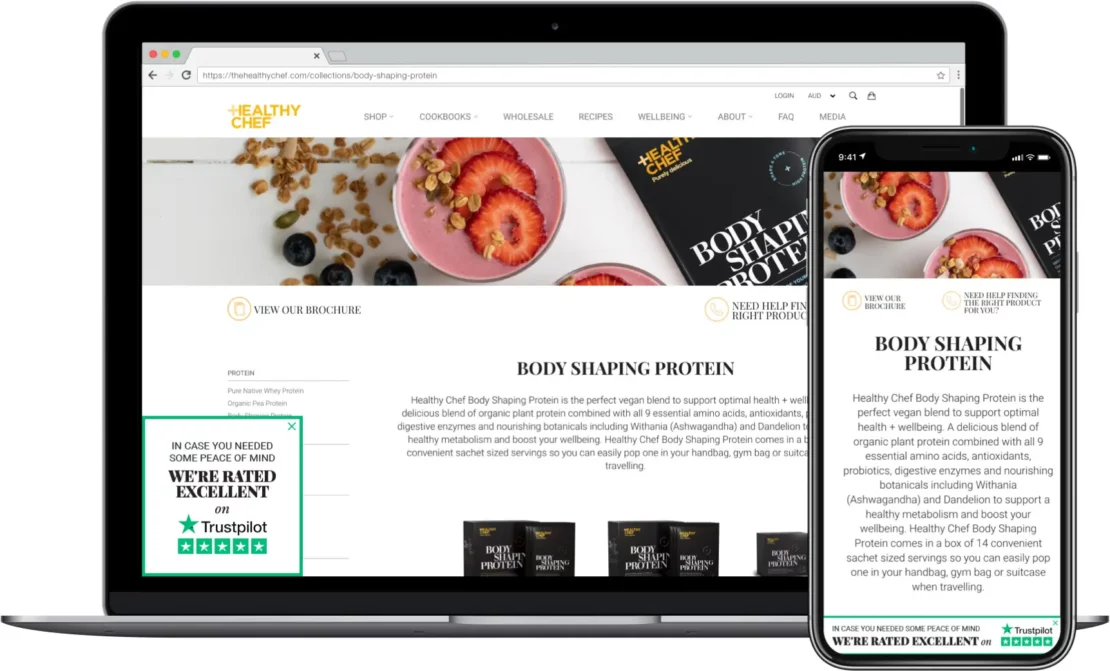
Personalization technology trends for 2023
Personalization trend #1: All-in-one personalization technologies
We already mentioned the rapidly growing demand for eCommerce personalization from consumers and businesses alike. But no matter how desirable personalization, it does come with its own set of challenges. Yieldify’s “Personalization after COVID-19” report showed that businesses still struggle with both, skill and resources:
- 37% said lack of expertise is their biggest impediment of personalization;
- 36% said tools still lack functionality;
- 34% said tools are too expensive;
- 23% said drafting a personalization strategy is a too complicated project;
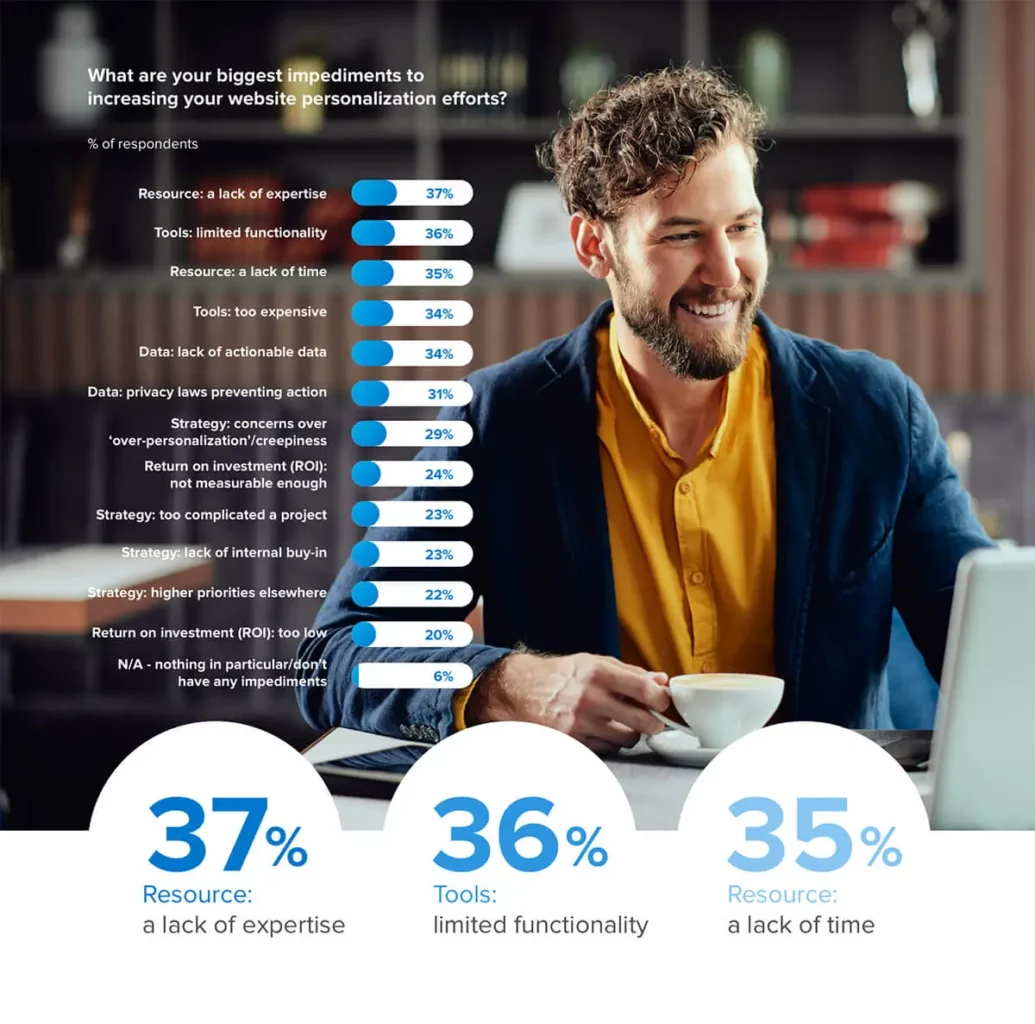
Aware of the existing challenges, personalization technology providers are moving to alleviate those pains by offering more and more functionality within a single, “one-stop-shop” service.
Marketing automation tools are becoming synonymous with personalization in that they often facilitate all or parts of the functionality, such as segmentation, real-time optimization, testing, and experimentation. Think of tools like Klaviyo or Emarsys that offer omnichannel experiences across web, mobile, email, SMS, ads, even direct mail!
In response, CRO and A/B testing platforms are expanding their offerings to include more complex solutions like behavioral segmentation, and utilize more channels.
Personalization trend #2: Unmasking anonymous visitors
No matter how familiar you are with personalization at this stage, it can still be quite mind-boggling having to personalize for an anonymous user. While there are certainly ways to do it in a fun and non-creepy way (see this Hubspot article), enterprise-level companies do want to take it a step further.
Mindful of this, personalization technology is increasingly developing its own or integrating with customer data platforms (CDPs) and third-party data service providers (DSPs).
“As marketers, your best investment is in technology platforms that aggregate and analyze data to break down unnecessary silos.
[For example,] Adobe’s Audience Manager integrates with several of today’s DSPs, meaning when a user clicks on your ad, data is aggregated back to Audience Manager which generates an authenticated ID that is attributed to that specific visitor.
Using that ID, you can begin to tailor content based on which ads the visitor has engaged with in the past without them ever having to fill out a form or disclose personal information.
r2integrated.com
Personalization trend #3: Integration with IoT devices
How many people do you know who have an Amazon Echo, Google Dot, or a different voice assistant at their homes? Chances are a lot. According to Amazon’s 2019 data, more than 100 million Alexa-powered devices had been sold since launching in 2014.
But those are just one type of available IoT devices out there: There are smart appliances, home automation, health tracking devices, and much more. All of these things are embedded in our lives and gather valuable data that personalization engines can use to deliver true 1:1 personalization.
For example, back in 2018, Amazon filed a patent that would allow its Echo device to detect when someone is ill from the change in their voice, nasal tones, and stuffed nose. When synced with Amazon’s website personalization engine, this is invaluable information to make personalized recommendations for cold medicine, recipes, etc.
Personalization trend #4: More 1-1 experiences
Brands are starting to take a “one on one” approach with customers. In the past years, this was just something that marketers talked about in prophecy but it’s no longer just talk as brands have gone beyond using customer names or showcasing complementary products based on browsing history by going further than ever before when making true 1:1 experiences come alive.
This one-on-one approach allows for truly personalized content which is great for customer engagement. One of the best examples of this comes from Spotify and their Discover Weekly playlist.
The Discover Weekly is a curated playlist of tracks that it thinks a user will like using an algorithm that determines a user’s “taste profile”. This is based on user data such as listening behavior and the most popular playlists among the entire Spotify audience.
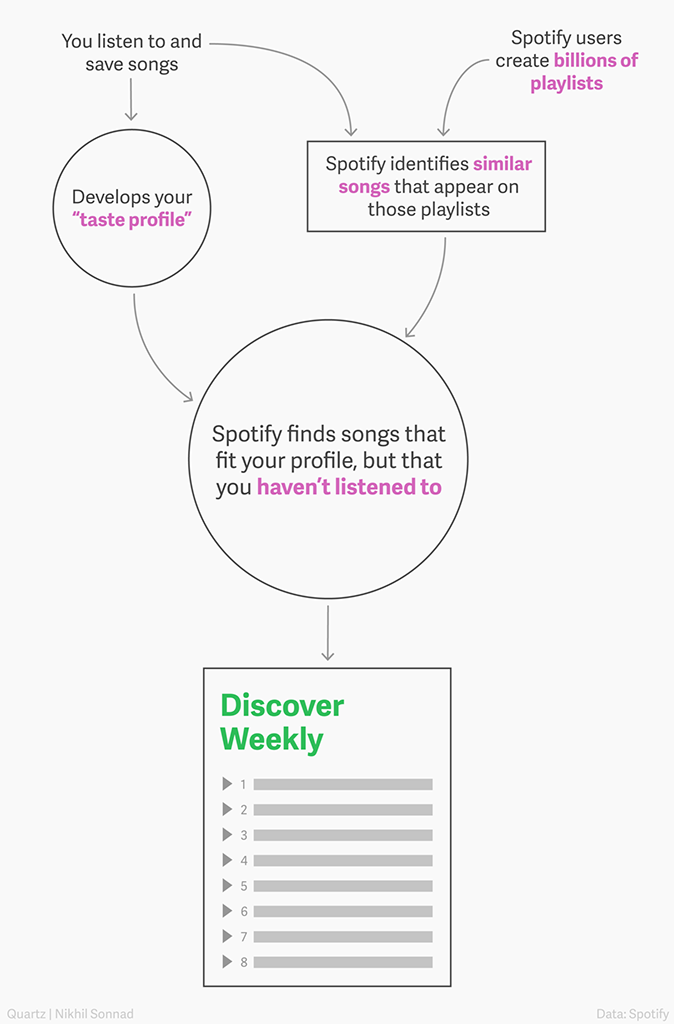
The algorithm takes into account interaction with the songs, for example, if you add a discover playlist song into one of your own personal playlists that’s a thumbs up it’s working if you skip a song within 30 seconds it knows it can do better.
Whilst you may not have all the data points that Spotify has this is a great example of using first party data points to provide a truly personalized experience at scale.
Conclusion
We hope that you have a better understanding of personalization technology and the many benefits that come with personalizing the customer experience.
Should you have further questions or want to jumpstart your personalization journey right now, get in touch with the experts at Yieldify and we’ll be glad to help you reap the benefits of personalization.
